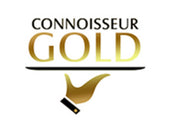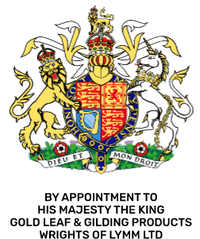Edible Gold Leaf Across the World - Poland
- by sam@wrightsoflymm.co.uk User
The History and Uses of Edible Gold Leaf in Poland
Gold has long held a place of reverence in cultures around the world, and Poland is no exception. In Polish culinary and cultural history, edible gold leaf—also known as goldleaf, gold flakes, gold dust, and silver leaf—has symbolized opulence, celebration, and tradition. From royal banquets to modern gastronomy, the use of gold and silver in food has evolved remarkably.
Terms Used for Edible Gold in Poland
In Poland, edible gold is commonly referred to as:
-
Złoto spożywcze – "consumable gold" or "food-grade gold"
These terms are used interchangeably in gourmet cooking, patisserie, and even in wellness products.
Gold Leaf in Polish History
The tradition of using 24 carat goldleaf and silver leaf in Poland dates back to the Renaissance period. Influenced by Italian and French nobility, Polish aristocracy began incorporating edible gold into feasts and celebrations as a status symbol.
During the Polish-Lithuanian Commonwealth (1569–1795), noble families known as the szlachta would host lavish banquets featuring dishes adorned with gold flakes and silver flakes. These metallic decorations were not only for show—they were believed to possess healing properties and were often used in elixirs and medicinal tonics.
Gold Leaf in Religious and Cultural Celebrations
In the 17th and 18th centuries, goldleaf became common in religious offerings, particularly during Easter and Christmas. Decorative confections coated in gold dust or silver dust were presented in churches or gifted during festive events.
One of the notable uses of edible metals in Poland was in the creation of decorative vodka bottles. High-end vodka was infused with 23 carat gold flakes or silver flakes, a practice that still continues today in brands marketed as luxury beverages.
Contemporary Culinary Uses in Poland
In modern Poland, edible gold is enjoying a resurgence in fine dining and luxury patisserie. Renowned Polish chefs and bakers now use 24 carat gold leaf and silver leaf to elevate the visual appeal of:
-
Wedding cakes
-
Luxury desserts (e.g., macarons, éclairs, mousse)
-
Chocolates and truffles
-
Gourmet sushi and meats
-
Cocktails and vodkas
Some upscale restaurants in cities like Warsaw, Kraków, and Gdańsk now offer dishes that include gold dust or gold flakes as part of their signature menus. These elements add not only visual flair but also a luxurious branding touch that attracts international tourists and local gourmets alike.
Wellness and Cosmetic Trends
Beyond food, goldleaf and silver dust are being used in Poland’s booming natural wellness industry. Local beauty brands and spas are incorporating 23 carat or 24 carat gold dust in facial masks, scrubs, and creams for their supposed anti-aging and anti-inflammatory properties.
Final Thoughts
The use of edible gold leaf in Poland is far more than a fleeting trend—it is a legacy rooted in nobility, religion, and tradition. From royal courts of the Renaissance to modern luxury dining and wellness, goldleaf, silver leaf, gold flakes, silver flakes, and even gold dust continue to symbolize prestige and celebration.
Whether it’s a decadent wedding cake dusted with 24 carat gold, or a handcrafted vodka laced with 23 carat silver flakes, edible metals are a glittering thread in the fabric of Polish culture.






